A Journalism Journey
ECU's student-run newspaper turns 100
The East Carolinian, East Carolina University’s student-run newspaper, has had several names and operated from different campus buildings. But its core mission — to provide real-world media training for students and a historical record of campus — remains strong as it enters its 100th year.
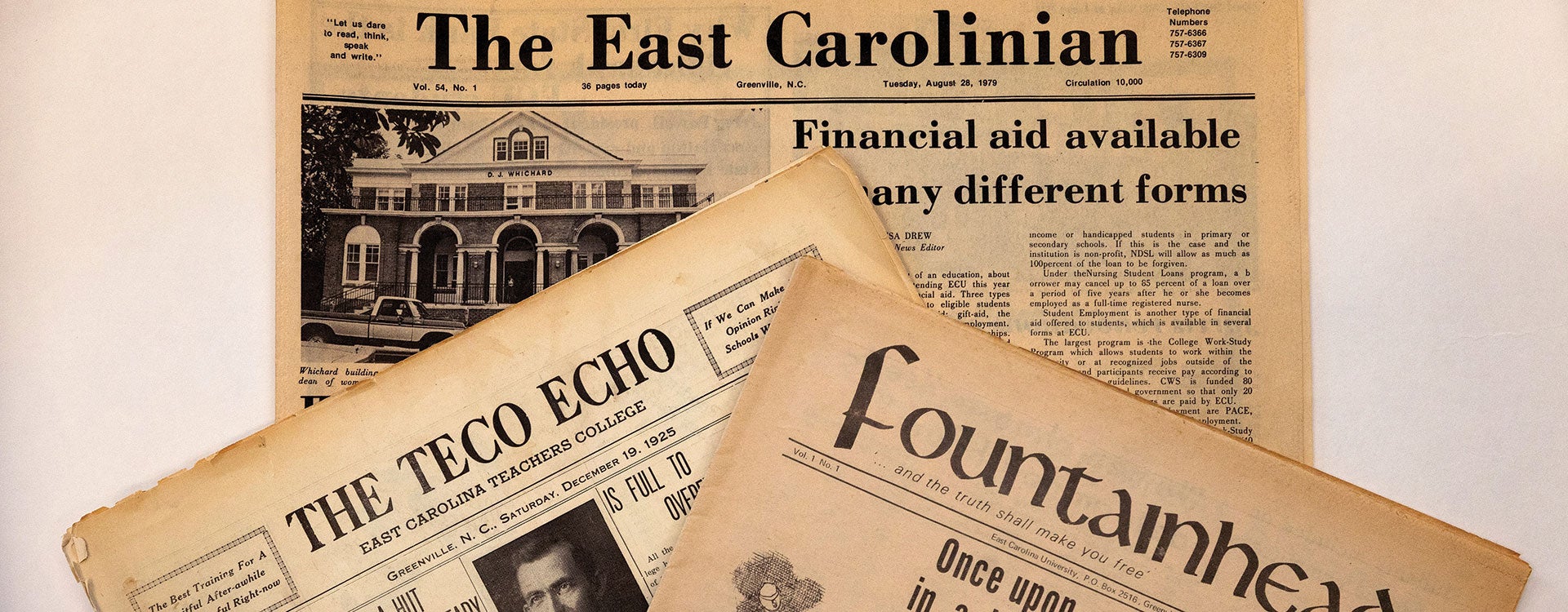 The first edition of The Teco Echo, The East Carolinian’s forerunner at then East Carolina Teachers College, was published Dec. 19, 1925. “‘Teco’ is, of course, derived from ‘Teachers College’ and the word ‘Echo’ just fitted in with our idea of what we wanted the paper to be — an echo of the college,” an introductory article says.
The first edition of The Teco Echo, The East Carolinian’s forerunner at then East Carolina Teachers College, was published Dec. 19, 1925. “‘Teco’ is, of course, derived from ‘Teachers College’ and the word ‘Echo’ just fitted in with our idea of what we wanted the paper to be — an echo of the college,” an introductory article says.
“Let us make our paper live up to its name, be an echo of what we in the college do and what we think. We do not lack for topics of conversation on the halls and in chapel, so why not express some of our ideas through our paper? With your co-operation fellow students we will be able to do this. Speak out with pen as well as with tongue. Tell the students and the public what you tell them in the corridors.”
In 1952, the paper was renamed East Carolinian, then was the Fountainhead from 1969-1979, and has been The East Carolinian ever since.
A learning laboratory
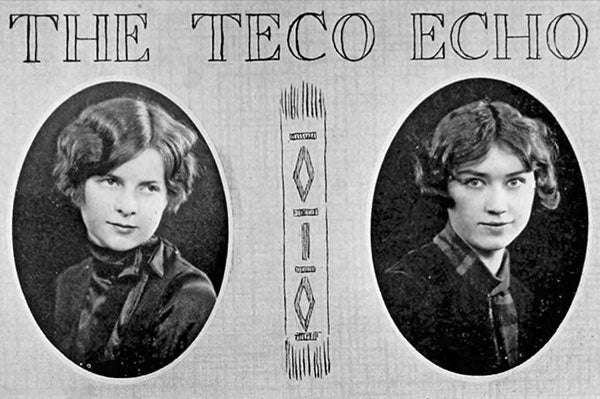
Deanie Boone Haskett, left, was elected the first editor after students voted unanimously in favor of a student-run newspaper. Frances Smith, right, served as business manager. (Archive photos)
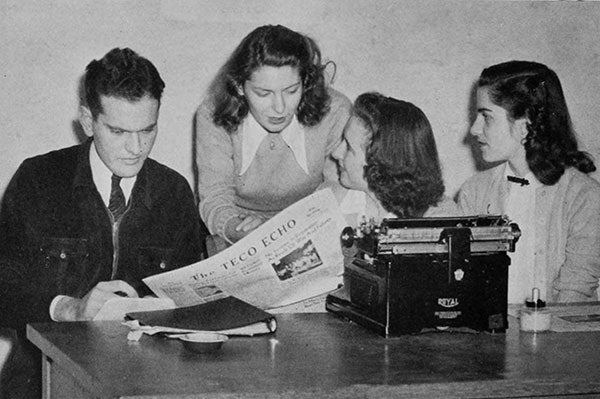
Editorial staff of The Teco Echo in 1942 look over the paper. (Archive photos)
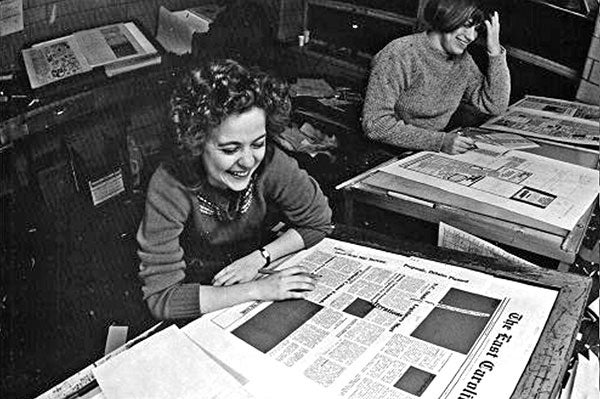
Jennifer Jendrasiak ’85 and BettyJo Norman ’86 work at newsroom light tables to lay out the pages of The East Carolinian. Content was printed in columns, cut and waxed, and applied to layout pages to prepare the newspaper for the press. (Archive photos)
The No. 1 goal of The East Carolinian is training for students, says Cherie Speller, TEC adviser and ECU director of student media, which includes WZMB radio, print magazines, design and visual arts, and advertising and marketing.
“This is a real-life laboratory for them to work in, make mistakes, learn and build off of so that when they leave here and work in the professional world, they’ve been exposed to it and know how to do it,” Speller says.
“There’s plenty of room to try out different things. I had seven or eight different positions during my time here,” says Annah Schwartz Howell ’18, multimedia and production adviser for ECU student media and former East Carolinian editor-in-chief. “Being able to push people to try new things sometimes that they may not have otherwise considered, they all end up being grateful for trying things that they didn’t think they were interested in initially.”
Diego Lerma ’25 was editor-in-chief this spring before graduating in May with a bachelor’s in communication. Lerma, who grew up in Sampson County, studied abroad in Poland, where he learned from a Ukrainian journalist covering the war.
“Her firsthand experience and seeing all that footage and her story, I was like, ‘Yeah, I think I want to do this,’” Lerma says. “Joining The East Carolinian was the turning point.”
Jessica Richmond ’15, an English major, served as a news reporter before moving into leadership roles and eventually editor-in-chief in 2014-15.
“I learned how to write stories that people related to. I learned the importance of journalistic integrity. And I learned how to stand by my convictions and advocate for myself,” Richmond says. “Beyond that, I also learned every skill that I currently use for my career: graphic designing, writing, research, coding and more.”
After graduating, Richmond was assistant managing editor at The Keene Sentinel in New Hampshire and now works as a search engine optimization specialist for Confie.
“I wouldn’t be where I am today without The East Carolinian. I found a place on campus where people’s words become actions. I found the power that journalism can have on the world, on a community,” Richmond says. “I feel immensely lucky to be part of such a long and illustrious history … I look back at the pictures from TEC in the ’30s and ’40s and despite the difference in dress and hairstyles I see kindred spirits. I’d love to hang out with them.”
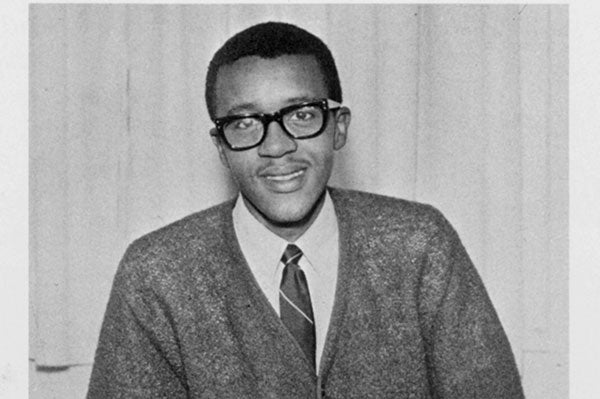
Bennie Teel ’67 became the publication’s first Black editor in 1966 following desegregation. He went on to travel and teach abroad before returning to the U.S. as a professor at Harvard. (Archive photos)
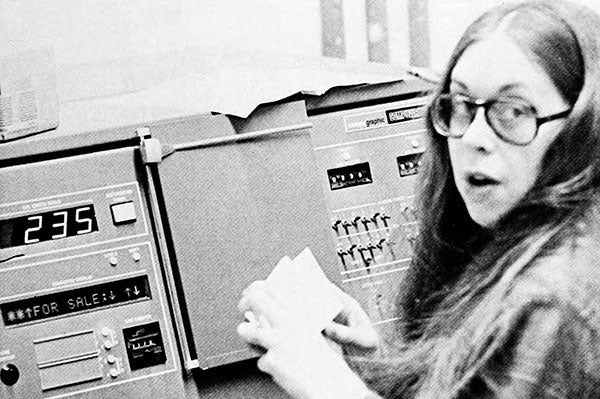
Alice Leary enters content into a typesetter in 1975. (Archive photos)

“Paper, Annual Get New Names”
In 1952, The Teco Echo was renamed East Carolinian. In 1969, it was renamed Fountainhead. The name was picked by staff “because the student newspaper should be the origin or source of news and ideas for the student.” In 1979, it was renamed The East Carolinian.
Amanda Lingerfelt Jackson ’05 ’07, the creator of the popular Pirate Rants section, remembers having a lot of freedom as editor-in-chief in 2004-2005.
“You realize when you leave, looking back, that you don’t get that kind of opportunity anymore,” she says. “It was really just a moment of learning lessons and trying what works and experimenting.”
Jackson joined The Rocky Mount Telegram after earning a communication degree before returning to ECU for her master’s in English. Now she is lead product manager at ADP, a human resources software firm in Atlanta where she focuses on the mobile app and web application.
‘Cheetos and Red Bull’

Former East Carolinian staff members attended a reunion last fall at Pitt Street Brewing Company in downtown Greenville. left to right, Brian Wudkwych, Ryan Clancy, Jessica “Jess” Richmond, Alaina Corsini, Kelsey Faulkner, Dan Hunt, Jennifer Bridgers, Annah Howell, Kate McElroy, Jordan Anders and Corey Keenan. (Contributed photos)
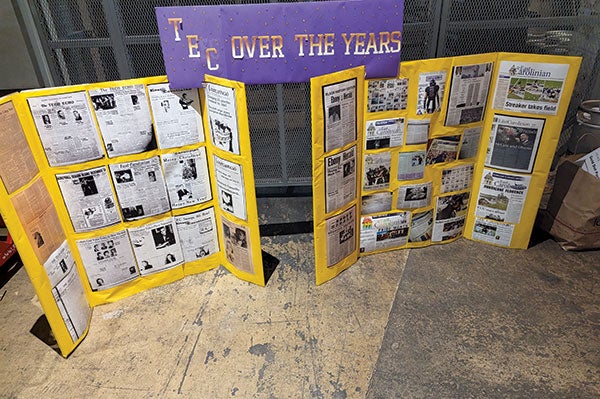
Poster boards filled with front pages of past issues.
(Contributed photos)
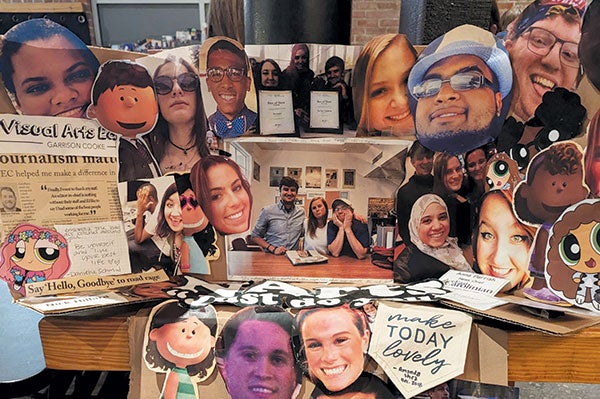
Candid photos encouraged attendees to reminisce about their time at ECU. (Contributed photos)
Being involved with student media offers benefits beyond job skills and having a front-row view of the life of a university. “In addition to giving them professional experience and knowledge … it also gives them a sense of belonging and connection and lifelong friendships,” says Glenn Hubbard, associate professor of communication who has served on the Student Media Board since 2019.
Richmond, who organized an East Carolinian reunion last fall, stays in touch with many fellow staffers. She trusts them for career advice, questions and more, helps edit friends’ resumes or social media posts — all built over shared experiences and long production nights spent editing and proofing in prepress routines.
“I had a table at my wedding just of TEC people. We really do become a family. Once you’ve bonded at 2 a.m. while surviving entirely on Cheetos and Red Bull, you’re bonded for life,” she says.
Marc Barnes and Susie Reis met at The East Carolinian, where Marc was editor-in-chief in 1979-1980 and Susie handled page layout. They’ve been married 40 years.
“The East Carolinian taught me about the business of journalism, and in a larger sense, about the idea of being an entrepreneur. We tapped business students to run the business end; English/journalism students to write and edit the paper,” says Marc, who owns a public relations firm in Greensboro.
That entrepreneurial spirit was evident 50 years ago when Bill Owens ’73, the paper’s first Black business manager, and his staff sold enough advertising to produce a 36-page back-to-school issue of the Fountainhead, which was then and may be the paper’s biggest issue ever, says Robert McDowell ’71, a two-time editor-in-chief who retired as webmaster for the N.C. Industrial Commission.
The paper even once spurred some competition.
“In my second year of grad school, I left The East Carolinian to join with two other ECU alumni, Jimmy McKee and Phil Cope, to become managing editor of The ECU Marauder, an independent campus newspaper that ran for one semester in 1991 in competition with TEC,” says David Herring ’89 ’92, who served as general manager of The East Carolinian in 1989-1990. “There was a fierce rivalry but also camaraderie between the two staffs of both papers that led to some amusing stories.”
Herring is now director of the communication, education and engagement division at National Oceanic and Atmospheric Administration’s Climate Program Office in Silver Spring, Maryland.

“The East Carolinian taught me about the business of journalism, and in a larger sense, about the idea of being an entrepreneur. We tapped business students to run the business end; English/journalism students to write and edit the paper.”
– Marc Barnes, editor-in-chief 1979-1980
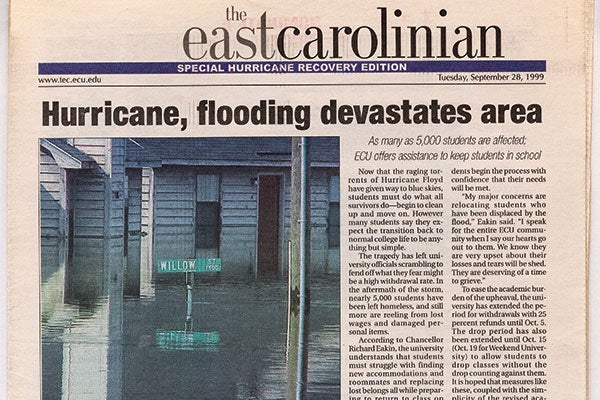
Leading stories of the day made their way to the front pages and special editions of TEC and its predecessors, including damage from Hurricane Floyd in 1999. (Photo by Rhett Butler)
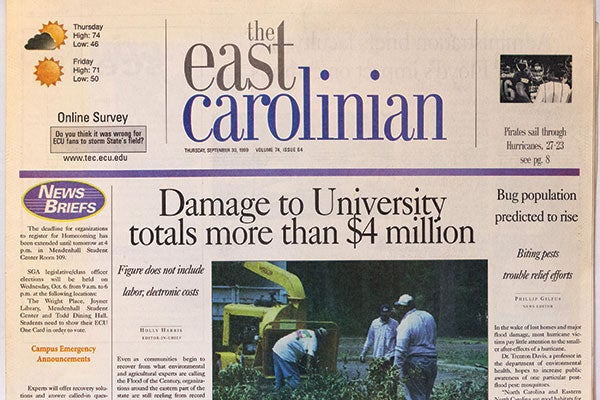
The East Carolinian running a store on hurricane damage to the university. (Photos by Rhett Butler)

A tribute to Chancellor Leo Jenkins in 1977. In addition to having different names, the newspaper changed size through the years, from a smaller tabloid to its current 11-by-22-inch broadsheet. (Photos by Rhett Butler)
‘An invaluable resource’ and a First Amendment case
Another main goal of The East Carolinian is to serve as a historical record, Speller says.
“It’s interesting to see how journalism evolves, because the very early papers are very opinionated. They’re not written in a way that I would have approved them,” says Howell.
Some headlines included the tragic death of The Teco Echo’s 20-year-old editor, who died of a heart attack while reviewing content in 1944. In 1972, a letter to the editor about residence hall regulations ended with an expletive for university president Leo Jenkins. The letter writer and editor were expelled but took the case to court, which decided the letter did not violate the First Amendment. As a result, both expulsions were lifted in a win for students’ freedom of speech.
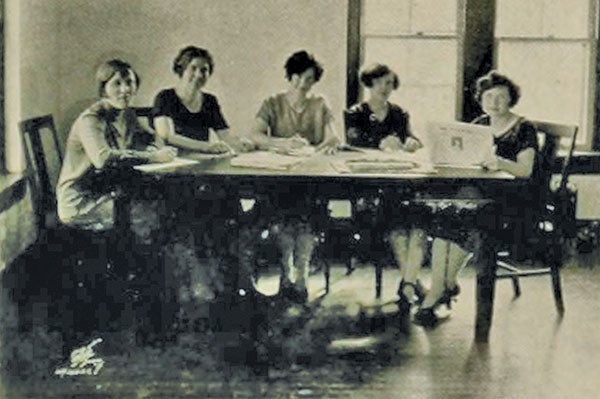
members of the editorial staff of the 1926 Teco Echo pose for a yearbook photo.
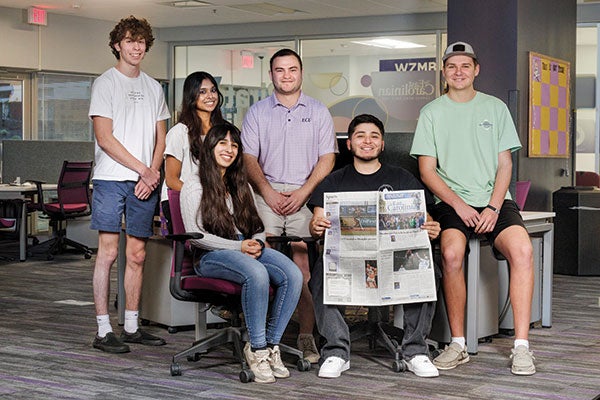
TEC staff members gather during a production night this spring in the new media offices in Mendenhall. They are, left to right, Gabriel Key, Trisha Rangaraju, Jamie Antinore, Garett Skillman, Diego Lerma and Parker Smith. (Photo by Steven Mantilla)
“Our student newspaper … is an invaluable resource for understanding the history of our school. Without the student press, historians would have little to go on when trying to capture the students’ perspectives on what’s happened at East Carolina,” says John Tucker, ECU professor of history and former university historian.
Major stories have included Jenkins’ retirement, Hurricane Floyd’s devastating impact and 9/11. An issue investigating sexual assault on campus featured a high-impact blacked-out cover. It was sent to First Lady Michelle Obama, who commended the staff, Howell says.
“We really dug into the heart of the issue, spoke to victims and highlighted their voices. We blacked out the cover of the paper, and it was extremely impactful,” Richmond says. Under editor Matthew Prensky ’19, TEC reported on asbestos and water quality in campus buildings buildngs and wrote an unflattering series on Greenville’s fire department.
Along the way, at least one Greenville City Council member accused him of being the most dogged reporter he had ever met. “I took it as a compliment. Looking back, I very much don’t think he meant it as a compliment,” Prensky says. “It was important to me that the truth come out and that people understand the danger that they’re in or the risk that they’re facing, or whatever’s going on. And I didn’t like taking no for an answer, which got me in trouble.”
Merging print and online news
The East Carolinian began expanding its reach in the late 1990s with its first website while maintaining a focus on local news.
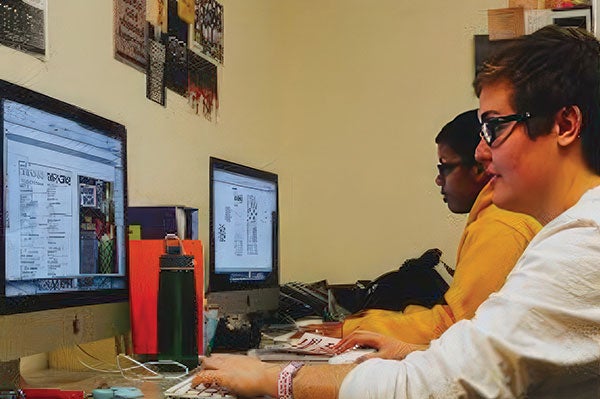
Cass Norris ’14, right, served as production manager of The East Carolinian. Norman led staff in online layout of the newspaper.
“We got a lot of tips through Twitter, and our sports guys were the ones that started tweeting out during games,” Richmond says. “I was the generation that actually created a lot of the social media accounts that are still being used. We also redesigned the website the year that I was managing editor (2014).”
Less than five years later, Prensky could see increases in views and readers online. He started having discussions about taking the printed product to once a week, and having reporters and others focus more on the digital side.
Prensky had seen other universities successfully make the switch. “You could see the signs and trends of where everything was going,” he says. “You know from a cost-saving perspective, that’s obviously huge, but also just in terms of going to where the readers are. Shifting to social media was really important.”
While content is produced and uploaded 24/7 to the newspaper’s website, Instagram, Facebook and X accounts, just one weekly edition is printed at The Daily Reflector facility in Greenville, hitting campus newsstands on Thursdays. But writers still covet a printed byline, Speller says.
“It’s just the coolest feeling. Being able to pick up a physical newspaper and see your story on the front page,” Prensky says.
After 100 years, the newspaper strives to serve its community.
“When you have a media outlet that is very specific to a university community, I think it becomes a voice of that community and a backbone of that community, and a sounding board for people in that community,” Hubbard says.
It’s a voice from down the hall, not the other side of the planet, he says. “I think it’s the idea that there are still media that say, ‘We are of and about this place and this entity.’”
Lessons and memories of past TEC leaders
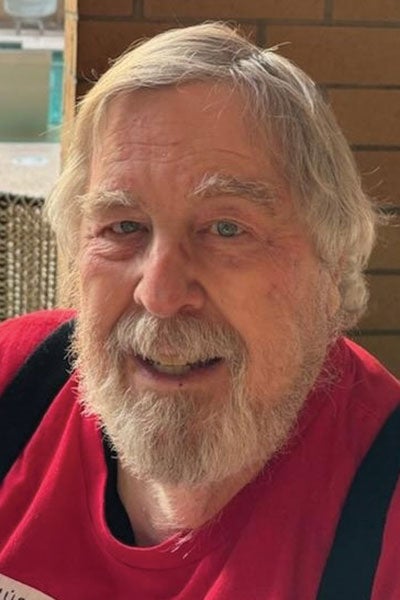
“Dr. Rachel Kilpatrick, a legendary English professor, once told me that she used the abundant grammatical and punctuation errors in The East Carolinian as examples in her classes — until I became the student newspaper’s copy editor. That’s probably the best compliment that I ever received.”
– Robert McDowell ’71, editor-in-chief 1969
Retired. Served 24-plus years as webmaster for the North Carolina Industrial Commission in Raleigh
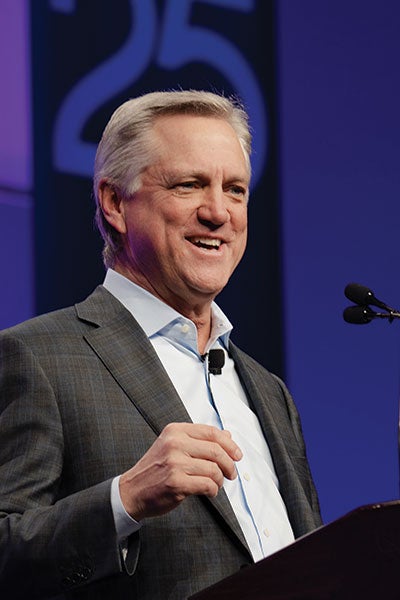
“We printed two editions per week, which required a trip to The Daily Southerner in Tarboro for printing. We spent several all-nighters there, which included my first experience with coffee — lots of coffee.”
– Fielding Miller ’84, general manager 1982-1983 Founding partner, chairman and CEO of CAPTRUST and an ECU trustee
